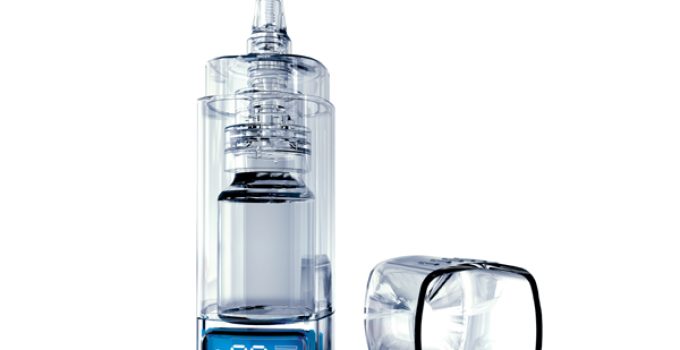CNS (Central Nervous System) disorders pose significant challenges in drug delivery due to the complex barriers protecting the brain. Traditional oral administration often falls short in delivering therapeutics effectively to the CNS. However, the exploration of alternative delivery routes, such as nasal routes, offers promising solutions. In this article, we delve into the intricacies of CNS drug delivery via nasal routes, highlighting their benefits and potential.
Understanding CNS Drug Delivery
The central nervous system comprises the brain and spinal cord, playing a crucial role in regulating bodily functions. Disorders affecting the CNS, such as Alzheimer’s disease, Parkinson’s disease, and stroke, present formidable therapeutic challenges. Effective drug delivery to the CNS is hindered by the blood-brain barrier (BBB) and other physiological barriers, limiting the passage of drugs into the brain.
Importance of Efficient Drug Delivery Systems
Efficient drug delivery systems are imperative for ensuring optimal therapeutic outcomes while minimizing side effects. Innovations in drug delivery technologies aim to overcome biological barriers and enhance drug targeting, enabling precise delivery to the intended site of action within the CNS.
Nasal Drug Delivery: An Overview
Nasal drug delivery offers a non-invasive route for administering therapeutics directly to the CNS. The nasal cavity’s rich vascularization and large surface area facilitate rapid drug absorption into systemic circulation, bypassing the BBB and potentially achieving higher drug concentrations in the brain.
Advantages of Nasal Drug Delivery
- Rapid Onset of Action: Nasally administered drugs bypass first-pass metabolism, leading to faster onset of therapeutic effects.
- Patient Convenience: Nasal delivery is non-invasive and can be self-administered, enhancing patient compliance.
- Reduced Side Effects: By bypassing the gastrointestinal tract, nasal delivery minimizes gastrointestinal irritation and degradation of drugs.
Nasal Drug Repositioning
Nasal drug repositioning involves repurposing existing drugs for CNS indications through nasal routes. This approach capitalizes on the advantages of nasal delivery to enhance drug efficacy and expand therapeutic options for CNS disorders.
Benefits of Drug Repositioning via Nasal Routes
- Improved Bioavailability: Nasal delivery can enhance the bioavailability of repurposed drugs, optimizing their therapeutic efficacy.
- Diverse Drug Candidates: Nasal drug repositioning enables the exploration of a wide range of existing drugs for CNS indications, accelerating the drug discovery process.
Systemic Nasal Drug Delivery
In addition to direct CNS targeting, nasal drug delivery can facilitate systemic absorption of therapeutics. Drugs administered nasally are rapidly absorbed into systemic circulation through the highly permeable nasal mucosa, offering an alternative route for systemic drug delivery.
Mechanisms of Systemic Nasal Drug Delivery
Systemic nasal drug delivery can occur via passive diffusion, active transport mechanisms, or nasal lymphatic uptake. These mechanisms contribute to the efficient absorption and distribution of drugs throughout the body, bypassing hepatic first-pass metabolism.
Challenges in CNS Drug Delivery
Despite its potential, nasal drug delivery faces several challenges, including nasal mucociliary clearance, enzymatic degradation, and variability in nasal anatomy among individuals. Overcoming these challenges is essential for optimizing the efficacy and safety of nasal drug delivery systems.
Barrier Challenges in Drug Delivery to the CNS
The BBB and other physiological barriers present formidable challenges in delivering therapeutics to the CNS. Strategies such as nanotechnology, prodrug design, and targeted drug delivery systems aim to bypass or overcome these barriers, enhancing drug penetration into the brain.
Overcoming Blood-Brain Barrier Challenges
Innovative approaches, including receptor-mediated transport and disruption of tight junctions, are being explored to enhance drug delivery across the BBB. Nanoparticle-based drug delivery systems and cell-penetrating peptides show promise in overcoming BBB limitations and improving CNS drug delivery.
Innovation in OINDP
Orally inhaled and nasal drug products (OINDP) represent a burgeoning field in drug delivery technology. These innovative formulations offer targeted delivery to the respiratory tract and nasal cavity, providing a direct route to the systemic circulation and CNS.
Advancements in OINDP Technology
Advancements in OINDP technology, such as particle engineering, device design, and formulation optimization, are enhancing drug delivery efficiency and patient outcomes. Inhalation devices with precise dosing capabilities and improved drug deposition patterns are revolutionizing the treatment of respiratory and CNS disorders.
Enhancing Efficacy and Safety
Strategies for enhancing drug efficacy in CNS delivery include optimizing drug formulations, improving nasal mucosal permeability, and utilizing drug delivery enhancers. Safety considerations, such as minimizing nasal irritation and ensuring product sterility, are paramount in developing nasal drug delivery systems.
Future Perspectives
The future of CNS drug delivery via nasal routes holds promise for addressing unmet medical needs and advancing therapeutic options for neurological disorders. Emerging technologies, such as nasal nanoparticle formulations and nasal peptide delivery systems, offer novel approaches to enhance drug delivery efficiency and target-specific CNS regions.
Potential Future Developments in Nasal Drug Delivery
Future developments in nasal drug delivery may include personalized drug delivery systems tailored to individual patient characteristics and disease profiles. Targeted drug delivery to specific brain regions, such as the hippocampus or substantia nigra, could revolutionize the treatment of neurodegenerative diseases.
Emerging Trends in CNS Drug Delivery Research
Current research trends in CNS drug delivery focus on leveraging nanotechnology, biomaterials, and bioengineering approaches to overcome biological barriers and enhance drug targeting. Collaborative efforts between academia, industry, and regulatory agencies are driving innovation in CNS drug delivery and paving the way for transformative therapies.
In conclusion, nasal routes offer promising avenues for CNS drug delivery, with advantages such as rapid onset of action, improved bioavailability, and patient convenience. Despite challenges such as barrier limitations and variability in nasal anatomy, innovative strategies and technological advancements continue to drive progress in nasal drug delivery systems. By exploring nasal drug repositioning, systemic nasal drug delivery, and advancements in OINDP technology, researchers are poised to revolutionize the treatment of CNS disorders and improve patient outcomes.



